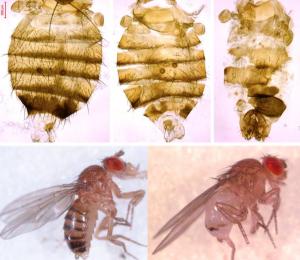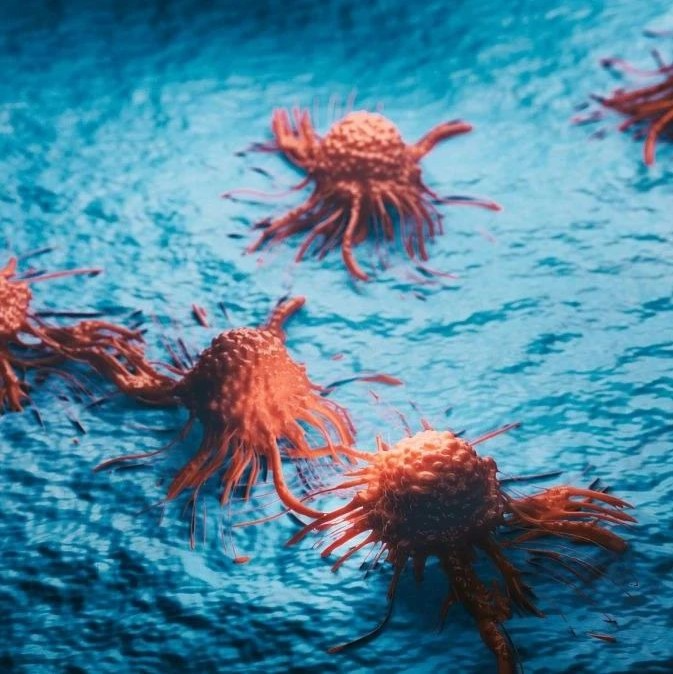摘要:基因很小的改变引起果蝇的腹部没有发育。移去基因的终止信号,果蝇会面临发育畸形和死亡的威胁。IBMC发现了两个polo基因终止信号,已经发表在EMBO杂志上。

发育正常(左)和畸形(右)的果蝇
A fly without an abdomen is the devastating result of a small genetic change discovered by a Portuguese team. When you remove the stop-signal from a fruit fly gene, the flies suffer developmental abnormalities and die. An article, published in The EMBO Journal by IBMC investigators shows that it matters which of the two polo gene stop-signals cells use. And that losing the second one leads to severe problems with normal development and eventually, death.
For genetic material to be decoded successfully, the genome carries signals or marks, a type of punctuation. These show the machinery of the cell where genes start and stop when they are copying the nuclear genetic material into messenger RNAs that carry information to the protein factories to make the constituents of the cell. During the de-codification of the genes there is a small mark -- named a polyadenylation signal -- that indicates to the cell "the message ends here" or "the full stop of genes," explains Alexandra Moreira3, who coordinated the research team. The work also involved two other groups: one at the IBMC, led by Claudio Sunkel and the other at the University of Oxford, led by Nicholas Proudfoot, who discovered polyadenylation signals more than 30 years ago.
However, the majority of genes have more than one stop-signal. Many researchers have tried to understand why this signal is often duplicated and how multiple stop-signals are read. At first it was thought that multiple signals ensure a definite stop and avoid the situation where a cell misses the first and continues to make a copy indefinitely with potentially serious consequences. Recent cellular studies have allowed us to understand that there is a correlation between the use of a particular full stop and cancer. However, so far these studies had only looked at these multiple polyadenylation signals in cells, not permitting the analysis of their effect on the whole organism.
What the Portuguese team did was to look for the first time at what effect alternative full stops in a gene could have at a whole organism level using the fruit fly as a model system. They used a gene, polo, with two possible polyadenylation signals, a gene which has a key role in cell division, is strongly associated with various forms of cancer and which has been considered as a target for gene therapy. The polo gene is the founder of a protein kinase family that was firstly identified by members of the research team.
The results were surprising and more dramatic than they could have expected: "when we make the fly using only the first stop-signal the effect is lethal" confirmed Alexandra Moreira. It seems that the presence of both full stop marks "allows more effective regulation of the levels of the







